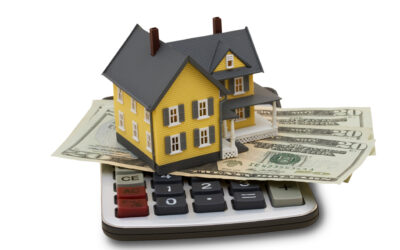Welcome to our guide on buying a house in Hawaii. If you’ve been fantasizing about owning a slice of paradise, you’re probably curious about the financial side of things, specifically the down payment. Whether your dream home is in the beautiful area of Kihei or a charming upcountry property in Pulakani, it’s essential to know the down payment requirements. Let us provide you with the information you need to make your Hawaiian home ownership dreams a reality.
Set Aside Funds for the Down Payment and Additional Expenses
When it comes to purchasing property in Hawaii, it’s important to be aware of the various closing costs involved. To take as an example, a $450,000 home in Kapalua per se would have estimated total closing costs to be around $9,500. These costs typically include an escrow fee, title insurance, lender title insurance, a lender fee, points on a loan (with each point equal to 1% of the purchase price), appraisal fees, closing reserve, taxes, maintenance fee (applicable for condos or CPRs), HOA transfer fee (specific to condos), and other associated fees.
By understanding the breakdown of these costs, you can better prepare yourself for a smooth and hassle-free closing process. Reach out to us today to discuss your specific scenario and receive expert guidance on navigating the closing costs for your dream property in Hawaii.
Hawaii’s High Home Prices
Recognized for its mesmerizing natural beauty and unique culture, Hawaii is also often associated with a high cost of living. This is particularly evident in the state’s real estate market, where property values are consistently higher than in many other parts of the United States. According to data from Point2homes.com, as of this year, the median price of a single-family home in Kihei, one of the most popular residential areas in Maui, stood at $639,300.
When considering these elevated prices, the financial implications become even more significant, specifically when it comes to making a down payment on a home. A down payment, which is typically a percentage of the total purchase price, can be quite substantial in Hawaii due to the high property values. For instance, even a down payment of 5%, generally considered on the lower end of down payment percentages, would equate to $31,965.00 for a home priced at the median value. This is a sizeable amount of money and could constitute a major financial commitment for many prospective homeowners.
Therefore, those considering buying a home in Hawaii must plan their finances carefully, taking into account not only the high property prices but also the substantial down payments they will likely require. It’s also worth noting that the down payment is just one part of the overall cost of buying a home, with other expenses such as closing costs, moving expenses, and ongoing maintenance costs also needing consideration.
The Basics of Down Payments
When it comes to buying a house in Hawaii, understanding the role of a down payment is essential. A down payment is an upfront payment that you make towards the cost of a home. It is a critical component of your home-buying journey, as it can significantly impact the size of your mortgage, monthly payments, and interest rates. The question on many potential homeowners’ minds is, how much of a down payment is required to buy a house in Hawaii?
The answer depends on a variety of factors, such as the cost of the home, the type of mortgage you can apply for, and whether you qualify for any down payment assistance programs. It’s important to work with a professional mortgage lender that can guide you through the process and help you make informed decisions that best suit your financial situation.
Down Payment Requirements in Hawaii
The down payment required when purchasing a home is subject to the type of mortgage loan you opt for. There are several standard mortgage options available, each with its own unique down payment requirements:
- Conventional Loans: A conventional loan, which is a loan not insured by any government agency, usually necessitates a down payment ranging from 5% to 20% of the total purchase price of the property. The percentage you choose to put down can significantly impact your financial obligations moving forward. For instance, if you’re financially equipped to make a 20% down payment, you’ll be exempt from having to pay for Private Mortgage Insurance (PMI). This exemption ultimately results in a lower monthly mortgage payment, providing some relief to your monthly budget.
- FHA Loans: The Federal Housing Administration backs FHA loans, making them a more accessible option for many potential homeowners. These loans offer a reduced down payment requirement—typically, if your credit score is 580 or higher, you’ll only need to put down 3.5%. This lower threshold makes homeownership more attainable for those with less savings or lower credit scores.
- VA Loans: VA loans provide an exceptional benefit for those who have served our country. Eligible veterans and active service members can take advantage of VA loans, which often require no down payment. This zero-down provision can make a significant difference for those transitioning from military to civilian life or for veterans seeking to own a home.
- USDA Loans: USDA loans are similar to VA loans in that they also potentially offer zero down payment options, but with a different set of qualifying factors. If the home you’re looking to buy is located in a designated rural area, you might be eligible for a USDA loan.
While these percentages serve as a general guide, it’s important to remember that the exact down payment amount will vary based on several individual and financial factors. These include your credit score, your debt-to-income ratio, and the specific requirements set by your chosen lender. It’s always best to consult with a financial advisor or mortgage professional to understand your unique situation fully.
Assistance Programs in Hawaii
If you’re feeling overwhelmed by the prospect of a high down payment in Hawaii’s expensive real estate market, take heart. The state offers several assistance programs designed specifically to help first-time homebuyers navigate the financial challenges of purchasing a home. One such initiative is spearheaded by the Hawaii Housing Finance & Development Corporation (HHFDC).
This organization offers a range of services, including affordable loans that are accessible to first-time homebuyers. These loans often come with lower interest rates and more flexible terms than traditional mortgage loans, making them a viable option for those who might otherwise struggle to secure a home loan.
Final Thoughts
In conclusion, while the amount needed for a down payment in Hawaii can seem overwhelming due to the high property prices, there are various loan options and assistance programs available. Do your research, consult with a mortgage advisor, and consider working with experienced realtors like Lisa Oyama. Her wide array of expertise and deep understanding of the Hawaiian real estate market can guide you in making an informed decision.
Remember, buying a home isn’t just about the down payment. Consider other costs like closing costs, homeowner’s insurance, and maintenance costs. And most importantly, choose a home that you love and can comfortably afford. After all, it’s not just a house—it’s your slice of paradise.



